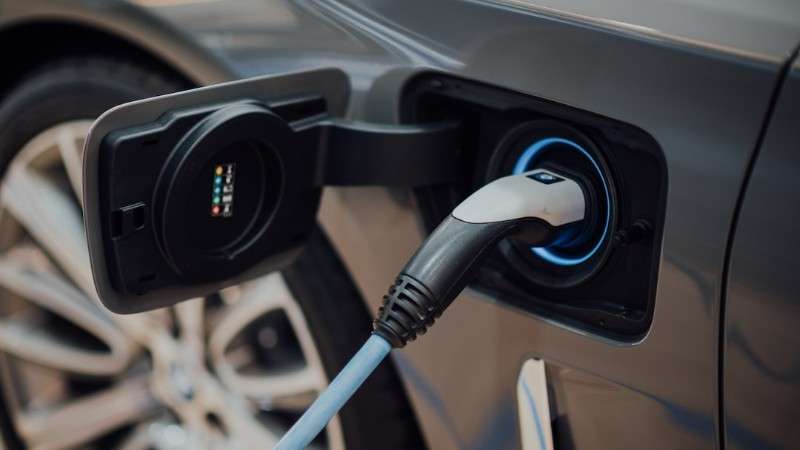
Electric vehicles are increasingly sharing the road alongside conventional vehicles all over the globe, spurred on by advances in technology and the need to reduce exhaust emissions to zero.
What Exactly Are Electric Vehicles?
Electric vehicles are powered by an onboard battery pack and electric motor rather than a gasoline-powered engine (also known as an internal combustion engine). In addition to charging the onboard battery pack using an electric power source, regenerative braking allows the vehicle to replenish the battery pack.
How Do Electric Vehicles Operate?
Today’s electric vehicles are powered by lithium-ion batteries, which can be recharged at home using an alternating current charger. DC electricity may also be used to charge electric vehicles rapidly. Some long-range electric cars have a range of more than 350 miles when fully charged, which is sufficient for traveling great distances regularly.
There are two types of electric vehicles
Pure electric vehicles and plug-in hybrid vehicles are the most common electric vehicles. These automobiles function in a variety of methods to provide electricity to an electric motor:
A pure electric vehicle (PEV) is a vehicle that runs entirely on electricity
Instead of operating an internal combustion engine like gasoline or diesel vehicles, these vehicles merely transmit energy from a massive lithium-ion battery to a relatively modest electric motor in the car’s base. The engine then propels the automobile.
Electric car with a plug-in hybrid powertrain
In a plug-in hybrid electric vehicle (PHEV), an electric motor and an internal combustion engine provide propulsion. Filling the petrol tank at a gas station or charging the batteries at an electric charging station are the only ways to power a plug-in hybrid. In most cases, these vehicles can go twenty to fifty miles on pure electric power before converting to a hybrid system, similar to that of a traditional hybrid vehicle.
What Is the Difference Between Electric Vehicles and Regular Automobiles?
Electric vehicles vary from conventional automobiles in that they do not need gasoline, diesel, or other liquid fuels. They get their energy from an electric charging station and store it in a battery pack mounted on the back of the vehicle. In contrast to a regular vehicle, an electric vehicle may utilize regenerative braking to slow down, therefore charging the battery in the process of slowing down. This braking system slows the automobile down and transforms kinetic energy into a kind of energy used to power various sections of the car’s electrical system. This energy may also be stored by the vehicle for subsequent use.
What Are the Benefits of Using Electric Vehicles?
Electric vehicles and plug-in hybrid vehicles have several benefits over gasoline vehicles, diesel vehicles, and even traditional hybrid vehicles:
Reduce greenhouse gas emissions to a bare minimum
Traditional automobiles and trucks run on fossil fuels, releasing greenhouse gasses into the atmosphere that contribute to global warming. Electric vehicles may be powered by a municipal power grid or a household power grid, both of which can be fueled by renewable energy. Electricity generated by a grid powered by renewable energy sources such as solar, wind, or geothermal energy emits minimal or no greenhouse gasses. Grids that are powered by coal or oil emit CO2 into the atmosphere.
Driving knowledge and experience
Electric vehicles fueled by batteries can quickly convert potential energy into kinetic energy. As a result of their immediate acceleration capacity, electric vehicles have higher torque and a more direct response than conventional vehicles.
Performance in hushed tones
Compared to typical automobiles powered by loud internal combustion engines, battery-electric vehicles are quieter and provide a smoother, more enjoyable driving experience.
Maintenance expenditures are reduced
Compared to a normal automobile powered by an internal combustion engine, electric cars have a very small number of moving components. As a result, less maintenance is required, and less time is spent off the road.
Charges for refilling are lower
The cost of charging a vehicle from an electric grid may be less expensive than the cost of filling up at a petrol station, depending on your location.
What Are the Drawbacks of Driving an Electric Vehicle?
While electric vehicles have several benefits over their gasoline and diesel equivalents, consider the following disadvantages as well:
Cost
Because of the costs associated with battery technology, today’s electric automobiles are more expensive upfront than identical gas vehicles. Buyers of select electric cars might benefit from government incentives that pay refunds. Despite this, the cost of electric vehicles continues to be a significant barrier to their widespread adoption.
Range
While some high-end electric vehicles have a range of more than 300 miles on a single charge, more economical versions typically have a range of 200 to 250 miles, which is insufficient to compete with today’s internal combustion engines. Because of this, there is a phenomenon known as “range anxiety,” in which drivers restrict their excursions because they are concerned about running out of fuel. As charging stations become more widely available on the nation’s highways, this worry may begin to subside as a result.
When it comes to harsh weather, the range is inconsistent
Extremely cold temperatures have been shown to significantly limit the power output of lithium-ion batteries in recent years. All-electric vehicles become less feasible in cold-weather countries due to these limitations.
Leave a Reply